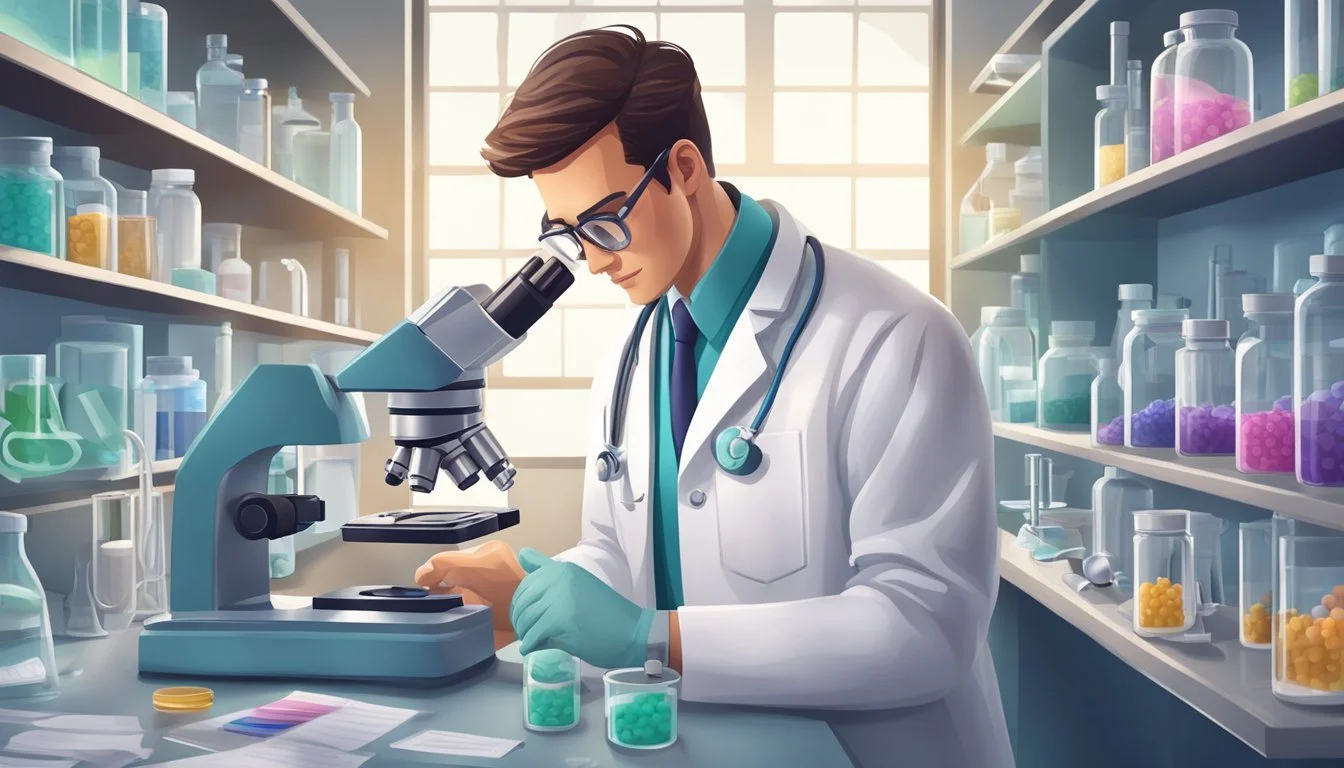1000 Kids, One Man: Netflix Documentary Exposes the Dark Side of Sperm Donation!
Netflix's new documentary series "The Man with 1000 Kids" explores the controversial story of Jonathan Jacob Meijer, a prolific sperm donor who fathered hundreds of children across multiple countries. The three-part series interviews families impacted by Meijer's actions and delves into the complex ethical issues surrounding sperm donation.
The documentary sheds light on the potential dangers of unregulated sperm donation and the emotional toll on families who discover their children have hundreds of half-siblings. It features interviews with mothers who used Meijer's sperm, adult children conceived through his donations, and experts in fertility law and ethics.
While Meijer declined to participate in the documentary, the series presents a comprehensive look at the far-reaching consequences of his actions. It raises important questions about donor anonymity, the responsibilities of sperm banks, and the need for stricter regulations in the fertility industry.
Understanding Sperm Donation
Sperm donation is a process that helps individuals and couples struggling with infertility to conceive. It involves careful screening, legal considerations, and ethical debates.
The Process and Ethics of Sperm Donation
Donating sperm typically begins with rigorous health screenings. Donors undergo tests for genetic disorders, infectious diseases, and overall health. They also provide detailed medical histories.
Donors usually sign legal agreements waiving parental rights. These contracts protect both donors and recipients from future complications.
Ethical concerns include limits on donor offspring numbers and anonymity issues. Some argue for open donation systems, allowing children to know their biological origins.
Compensation for donors varies by country and clinic. In some places, it's viewed as altruistic and only expenses are covered. Others offer financial incentives.
Fertility Clinics and Sperm Banks
Fertility clinics and sperm banks play crucial roles in facilitating sperm donation. They store and distribute donated sperm samples.
These facilities follow strict protocols for sample collection, testing, and storage. Cryopreservation techniques allow long-term storage of viable sperm.
Clinics match donors with recipients based on physical characteristics, medical history, and other factors. Some offer detailed donor profiles, including education and hobbies.
Insemination procedures vary. Options include intracervical insemination (ICI) and intrauterine insemination (IUI). The choice depends on individual circumstances and medical advice.
Success rates for sperm donation pregnancies vary. Factors include recipient age, fertility status, and insemination method used.
Case Study: 'The Man With 1000 Kids'
Netflix's documentary "The Man With 1000 Kids" explores the controversial actions of Jonathan Meijer, a prolific sperm donor. The series examines Meijer's life and the legal ramifications of his extensive donations.
Life of Jonathan Meijer: A Netflix Spotlight
Jonathan Jacob Meijer gained notoriety for his widespread sperm donations. The Netflix documentary reveals he donated to at least 11 sperm banks in the Netherlands, as well as making private donations globally.
Meijer's actions resulted in an estimated 1000 biological children across multiple countries. The series features interviews with parents who used his sperm, unaware of the extent of his donations.
Many of these parents connected online and sought help from the Donorkind Foundation. Their stories highlight the personal impact of Meijer's actions on families and children.
Legal Implications and the Dutch Court Systems
Meijer's case brought attention to the lack of regulation in sperm donation. The Dutch court system became involved when the extent of his donations was discovered.
Legal proceedings focused on the potential risks of consanguinity and the ethical implications of his actions. The court ruled to prohibit Meijer from making further donations.
This case study exposed gaps in fertility clinic practices and donor screening processes. It sparked debates about the need for stricter regulations and better tracking systems for sperm donors internationally.
The documentary raises questions about fertility fraud and the rights of donor-conceived individuals. It highlights the complex legal and ethical challenges surrounding assisted reproduction.
The Impact of Sperm Donors on Families
Sperm donation has profound effects on families, creating new connections and raising complex emotional and social questions. It enables family formation for those who might otherwise be unable to have children, while also presenting unique challenges.
Building Families Through Sperm Donation
Sperm donation offers hope to individuals and couples struggling with infertility. It allows same-sex female couples and single women to become parents. Many donor-conceived children grow up in loving homes, unaware of their genetic origins until later in life.
The process can create large extended families. In some cases, a single donor may have dozens or even hundreds of biological offspring. This raises concerns about accidental consanguinity - the possibility of half-siblings meeting and forming romantic relationships unknowingly.
Donor-conceived individuals often express curiosity about their genetic origins. Some seek out their donors or half-siblings later in life. This can lead to expanded family networks and new relationships.
Psychological and Social Considerations
Learning of one's donor conception can be emotionally challenging. Some donor children report feelings of loss or identity confusion. Others embrace their unique origins and the families that raised them.
Parents face decisions about if and when to disclose donor conception to their children. Many experts recommend early disclosure to build trust and avoid later shock. Open communication can help families navigate complex emotions.
Donor anonymity policies vary. Some countries now ban anonymous donation, recognizing offspring's right to know their genetic origins. This shift impacts both donors and recipient families.
Half-sibling connections raise new questions about family boundaries. Some donor-conceived individuals form close bonds with genetic half-siblings, expanding traditional family structures.
Social Media and Sperm Donation
Social media platforms have transformed how people connect and share information about sperm donation. These online spaces provide crucial avenues for donor-conceived individuals, parents, and donors to interact and support each other.
YouTube and Its Role in Connecting People
YouTube has become a vital platform for sharing experiences related to sperm donation. Many donor-conceived individuals use the site to post videos about their journeys of discovery and search for biological relatives. Some have even created dedicated channels to document their experiences.
These YouTube videos often garner significant attention, helping to raise awareness about the complexities of sperm donation. They also serve as a resource for others in similar situations, offering guidance and support.
The platform has facilitated unexpected connections. In some cases, donor siblings have discovered each other through comments on videos or through shared genetic traits visible in content creators.
Facebook Groups: Fostering Community Support
Facebook Groups have emerged as essential hubs for those affected by sperm donation. These online communities provide spaces for donor-conceived individuals, parents, and donors to share experiences, seek advice, and offer emotional support.
Many groups focus on specific donors or clinics, allowing members to connect with potential genetic relatives. Some have even led to the discovery of large donor sibling groups, as seen in cases highlighted by recent Netflix documentaries.
These groups often serve as starting points for offline meetups and reunions. They've played a crucial role in helping donor-conceived individuals build relationships with half-siblings and, in some cases, their donors.
Privacy settings in these groups allow members to control the level of information they share, creating safe spaces for sensitive discussions.
The Legal and Societal Implications
Sperm donation practices raise complex legal and ethical questions. Recent documentaries have shed light on cases of serial donors and fertility fraud, prompting calls for stricter regulations.
Preventing Unethical Practices in Sperm Donation
Fertility clinics and sperm banks face challenges in screening prolific donors. Some countries have implemented donor registries and limits on donations per donor.
The Netherlands banned Jonathan Jacob Meijer from donating after fathering hundreds of children. However, he continued donating in other countries, exposing gaps in international oversight.
Experts advocate for global databases to track donors across borders. Proposed measures include genetic testing to prevent accidental incest between half-siblings.
Fines and criminal penalties for fertility fraud are being considered in some jurisdictions. Legislation aims to deter doctors from using their own sperm without consent.
Navigating the Legal System for Donor-Conceived Children
Donor-conceived individuals often struggle to access information about their biological origins. Many countries still permit anonymous donation, limiting offspring's ability to know their medical history or find half-siblings.
Some nations have banned anonymity, granting children the right to donor information upon reaching adulthood. This shift recognizes the psychological importance of genetic heritage.
Legal cases have emerged with donor-conceived people seeking parental rights or inheritance claims. Courts grapple with defining parenthood in the context of assisted reproduction.
Fertility fraud activists push for expanded statutes of limitations in cases of misrepresentation by clinics or doctors. They argue deception's impact may only surface years later.
Advancements and Challenges in Fertility Treatments
Fertility treatments have evolved significantly over the years, bringing new possibilities and considerations. Regulatory changes and technological innovations continue to shape this field.
Sperm Bank Regulations and Private Donations
Sperm banks face increasing scrutiny and regulation. In the Netherlands, stricter limits on donor contributions have been implemented. This aims to prevent scenarios like those depicted in Netflix documentaries, where donors fathered hundreds of children.
Private clinics must now adhere to more rigorous screening processes. Background checks and genetic testing of donors have become standard practice. Some countries have banned anonymous donations entirely.
Cryos International, a leading sperm bank, has adapted its policies. They now offer more detailed donor profiles and limit the number of families per donor. These changes promote transparency and reduce health risks associated with large donor sibling groups.
Technological Advancements in Fertility
Artificial intelligence is revolutionizing fertility treatments. AI algorithms help select the most viable embryos for implantation, improving success rates. Time-lapse imaging allows for continuous monitoring of embryo development without disturbing the incubation process.
Genetic testing has become more sophisticated. Preimplantation genetic testing can screen for chromosomal abnormalities and specific genetic disorders. This enables couples to make informed decisions about embryo selection.
Fertility centers now offer egg and sperm freezing with improved vitrification techniques. This preserves reproductive options for individuals facing medical treatments or delaying parenthood. Some companies even provide egg freezing as an employee benefit.
Personal Narratives and Documentary Storytelling
Netflix documentaries on sperm donation illuminate complex human stories and raise awareness about fertility issues. These films provide intimate glimpses into the experiences of donors, recipients, and resulting children.
Individual Stories of Sperm Donors and Recipients
Netflix's "The Man With 1000 Kids" explores Jonathan Meijer's prolific sperm donations across the globe. The documentary interviews families impacted by his actions, offering personal perspectives on the consequences of extensive donation.
Dr. Donald Cline's case, featured in "Our Father," reveals the shocking story of a fertility doctor who secretly used his own sperm to inseminate patients. This film showcases the emotional journeys of individuals who discovered their unexpected genetic connections.
These documentaries highlight the diverse motivations of sperm donors and the hopes of recipients seeking to build families. They also explore the complex emotions experienced by donor-conceived individuals as they uncover their origins.
The Role of Documentaries in Fertility Education
Netflix documentaries serve as powerful educational tools, shedding light on the ethical and legal complexities surrounding sperm donation. They expose viewers to:
Varied perspectives on donor anonymity
Psychological impacts on all parties involved
Legal challenges in regulating fertility practices
By presenting real-life scenarios, these films spark important conversations about reproductive rights, genetic relationships, and the evolving landscape of assisted reproduction technologies.
Documentaries also play a crucial role in revealing potential abuses within the fertility industry, as seen in the exposure of Dr. Cline's unethical practices. This increased awareness can lead to improved regulations and patient protections.
Broadening Perspectives on Sperm Donation
Sperm donation practices and attitudes vary significantly across cultures and countries. Genetic surprises can occur, leading to complex emotional and practical challenges for donors, recipients, and offspring.
Cultural and International Views
In some countries, anonymous sperm donation is prohibited to protect children's right to know their genetic origins. Sweden banned anonymous donations in 1985, while the UK ended donor anonymity in 2005.
Many European nations limit the number of children per donor to reduce the risk of accidental incest. The Netherlands caps donations at 25 children per donor.
In contrast, the US has fewer regulations. Some clinics allow donors to father over 100 children. This lack of oversight has led to cases of donors having hundreds of biological offspring.
Japan and China have cultural taboos around sperm donation, resulting in shortages. Some Chinese couples travel abroad for fertility treatments due to limited domestic options.
Coping with Genetic Surprises
DNA testing kits have revealed unexpected genetic links between donor-conceived individuals. This can lead to the "Luke and Leia complex" - a term referencing accidental romantic relationships between half-siblings.
Some donor-conceived people experience identity issues or a desire to connect with their biological father. Support groups and counseling services have emerged to help individuals navigate these complex emotions.
Donors may be unprepared for large numbers of biological children seeking contact. This can strain relationships with their immediate families and lead to difficult decisions about engagement.
Recipient parents face challenges in deciding when and how to disclose donor origins to their children. Open communication is often recommended by experts to avoid traumatic revelations later in life.






